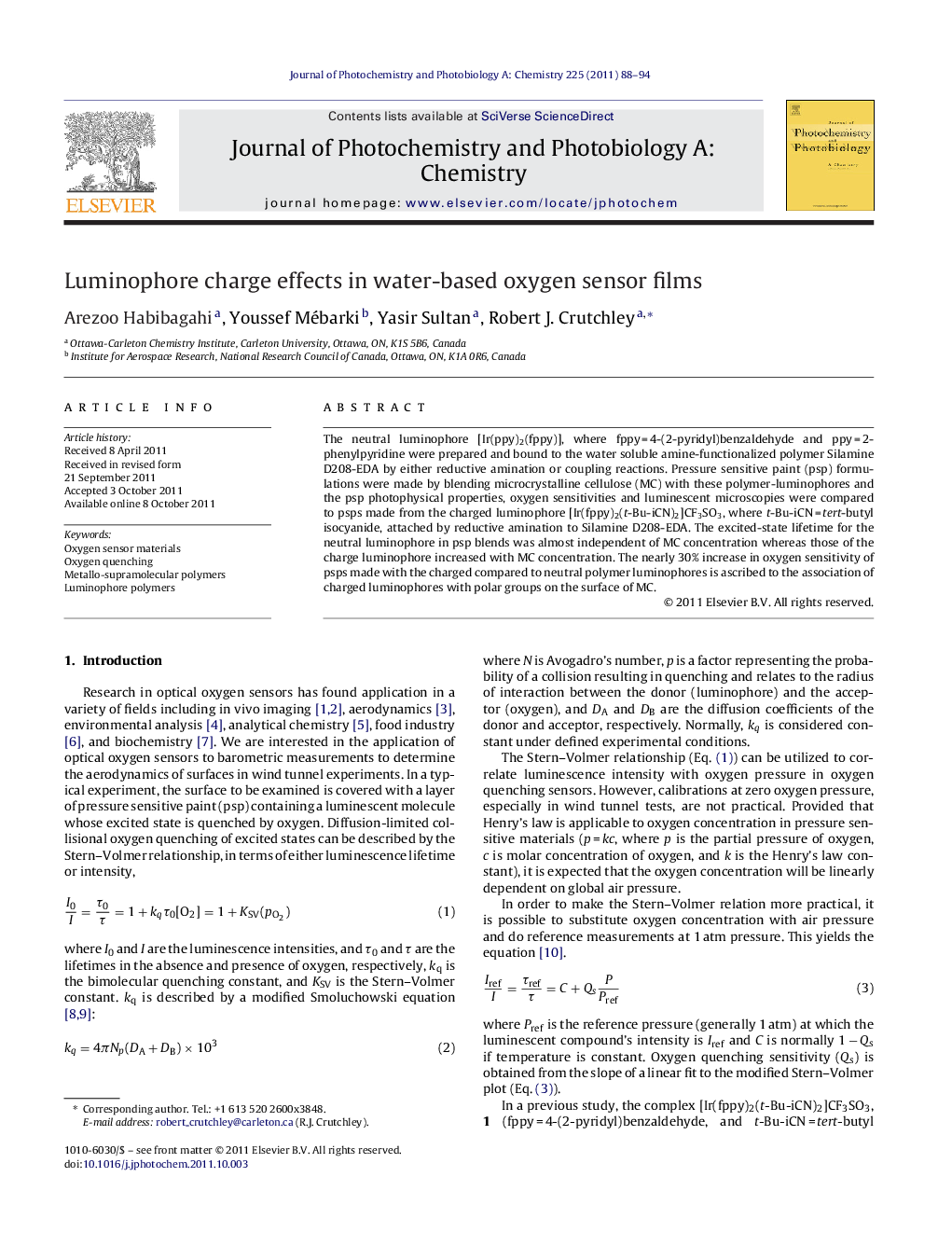| Article ID | Journal | Published Year | Pages | File Type |
|---|---|---|---|---|
| 26677 | Journal of Photochemistry and Photobiology A: Chemistry | 2011 | 7 Pages |
The neutral luminophore [Ir(ppy)2(fppy)], where fppy = 4-(2-pyridyl)benzaldehyde and ppy = 2-phenylpyridine were prepared and bound to the water soluble amine-functionalized polymer Silamine D208-EDA by either reductive amination or coupling reactions. Pressure sensitive paint (psp) formulations were made by blending microcrystalline cellulose (MC) with these polymer-luminophores and the psp photophysical properties, oxygen sensitivities and luminescent microscopies were compared to psps made from the charged luminophore [Ir(fppy)2(t-Bu-iCN)2]CF3SO3, where t-Bu-iCN = tert-butyl isocyanide, attached by reductive amination to Silamine D208-EDA. The excited-state lifetime for the neutral luminophore in psp blends was almost independent of MC concentration whereas those of the charge luminophore increased with MC concentration. The nearly 30% increase in oxygen sensitivity of psps made with the charged compared to neutral polymer luminophores is ascribed to the association of charged luminophores with polar groups on the surface of MC.
► Neutral and charged luminophore polymers as oxygen sensor films. ► Charged polymers bind to microcrystalline cellulose binder. ► Increased excited state lifetime of charged polymer results in greater oxygen sensitivity. ► Temperature dependent oxygen sensitivity requires calibration.
